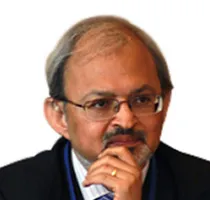-
CENTRES
Progammes & Centres
Location
 PDF Download
PDF Download 
Over the past few years, there is noticeable amongst India watchers an inescapable feeling of disappointment at what has been seen as a perceptible rolling back of many of the much vaunted reforms that had been the face of the country’s efforts to integrate with world energy markets through the turn of the century. With an import dependence of over 70%, and increasing with each passing year, the petroleum sector had been the obvious choice to move on reforms. There were few surprises then when a definitive roadmap for the entire process was laid out in the Government’s Resolution dated 21st November 1997 with specified time lines for the phased dismantling of price controls that had been the hallmark of the hitherto prevailing Administered Pricing Mechanism.
What was even more impressive was the broad consensus on the reforms road map across a wide spectrum of political hues. Even as regional groupings in Indian politics gained an ever increasing strength which did serve to weaken the parade of successive Government coalitions which came and went through 1995 to 2004, the reform agenda set out never became a major point for debate.
A high degree of import dependence, stagnating domestic production and 3.14 million sq kilometres of poorly explored or unexplored sedimentary area made it necessary to not only encourage investments and technology in domestic exploration and production but also bring in competition in the refining and marketing of products. These had become imperative for the sustained growth of the Indian economy as well as the long term energy security of the country. It was recognised that the country desperately needed to develop better efficiencies in the production, use and distribution of petro products and get increasing access to natural gas from the resource rich Middle East and Central Asia. While world over the share of Natural gas as an energy source had risen rapidly to as much as 24%, India’s gas sector continued to languish contributing barely 8% to the country’s energy basket. The biggest impediment to its growth was seen as the insular domestic gas market the growth of which was constrained by the availability of dwindling domestic supplies. This limited available gas was allocated to chosen industries at prices determined by Government fiat. With a low production base and prices divorced from international markets, India could hardly hope to encourage investments for either the exploration or development of its domestic gas resources or for the infrastructure necessary for receiving and transporting it from beyond its borders.
The views expressed above belong to the author(s). ORF research and analyses now available on Telegram! Click here to access our curated content — blogs, longforms and interviews.

Sunjoy Joshi has a Master’s Degree in English Literature from Allahabad University, India, as well as in Development Studies from University of East Anglia, Norwich. ...
Read More +